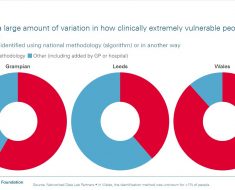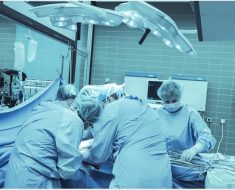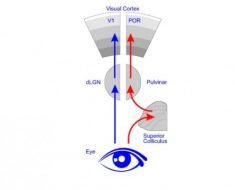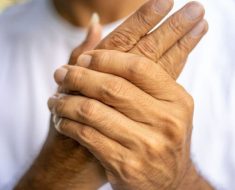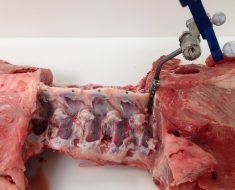The causative agent of the current coronavirus disease 2019 (COVID-19) pandemic is severe acute respiratory syndrome coronavirus 2 (SARS-CoV-2). To date, more than 118 million cases of COVID-19 have been confirmed worldwide, and over 2.6 million have lost their lives.
SARS-CoV-2 is a positive-sense virus containing a large RNA genome encoding several structural proteins – namely, the envelope (E), nucleocapsid (N), membrane (M), and spike (S) proteins. It also codes multiple non-structural and accessory proteins.
.jpg)
Some human coronaviruses, such as 229E, NL63, OC43, and HKU1, cause a mild common cold. However, three novel coronaviruses, namely, SARS-CoV, MERS-CoV, and SARS-CoV-2, can cause fatal respiratory syndrome. Among these three, SARS-CoV-2 is the most infectious, but least virulent.
SARS-CoV-2 can evade the innate immunity of the host. The primary mechanism by which it escapes innate immunity is by synthesizing numerous structural and nonstructural proteins that inhibit the production and efficacy of interferons (IFNs). The main function of IFNs is to recognize non-self, pathogen-associated molecular patterns (PAMPs), for example, double-stranded RNA via host proteins DDX58 (RIG-I) and toll-like receptor 3/7 (TLR3/7). After identifying a viral RNA, it promotes the activation of transcription factors (IRF3, AP1 complex, and NFKB) and phosphorylation. The blocking of IFN enables unfettered replication of the virus. In addition to its antiviral functions, IFNs also alert the host of virus invasion with symptoms like fever, fatigue, and pain. Therefore, bypassing IFNs also causes asymptomatic transmission. This hinders the process of isolation of the infected person, as it becomes difficult to separate infected and healthy individuals.
Scientists believe understanding the molecular mechanism behind the immune evasion tactics of SARS-CoV-2 could help create both a more effective diagnostic kit and targeted therapeutics. The study of the viral genomic sequence helps to discover the molecular pathways associated with SARS-CoV-2 infection. RNA sequence (RNA-seq) of the infected persons’ nasopharyngeal swabs show an up-regulation of antiviral factors such as OAS1-3 and IFIT1-3. In older individuals, muted expression of IP-10, a chemokine, has been reported. Additionally, transcriptional profiles of serum samples of SARS-CoV-2 infected cells of humans and animals reveal low levels of type I and III IFNs. However, the levels of TNF, IL-6, RANTES, and CCL20 are high compared to influenza A infection. This indicates the difference in the immune responses to SARS-CoV-2 compared to other respiratory viruses. There is currently a gap in research regarding the post-transcriptional regulatory mechanisms. These mechanisms involve suppressing host gene expression and magnitude, duration, initiation, and resolution by which the virus evades the host's innate immune system.
A new study was published on the bioRxiv* preprint server, which focuses on ribosome profiling to determine post-transcriptional regulation of host gene expression during SARS-CoV-2 infection. Researchers have found that SARS-CoV-2 is extremely sensitive to type I IFN pre-treatment. Therefore, strategies such as focusing on limiting the production of IFN, rather than its function, could restrict the mechanism of SARS-CoV-2 that increases its viral load with delayed or absent symptoms.
This research has shown that among the 26 viral proteins tested in this study, non-structural protein 1 (Nsp1) is one of the most potent inhibitors of IFNB1. Nsp1 restricts host translation by inhibiting the mRNA entry tunnel on the 40S ribosome. It can also lead to endonucleolytic cleavage in the 5’ UTR that prevents the deployment of more ribosomes to host mRNAs.
Researchers found the presence of restricted translation of type I and III IFNs after 24 hours of SARS-CoV-2 infection. Additionally, using the unbiased genome-wide methodology, scientists found a restricted translation of antiviral cytokines (IFNL1-3, IFNB1, CCL5, CXCL11, and IL6) 24 hours post-infection. This research also indicates that time plays an important role in the antiviral activity of pro-inflammatory cytokines. Further, selected transcription factors are also found to be restricted at the post-transcriptional level. JUN, ZBTB20, ATF3, HIVEP2, and EGR1 have shown the greatest restriction, which is responsible for the increase in substrate mRNA. REL and CREB5 were found to be significantly up-regulated by RNA-seq and not by Ribo-seq.
This research has also shown post-transcriptional restriction by RNA binding proteins, such as PARP14 and ZC3HAV1 (PARP13). For example, loss of PARP14 strongly attenuates inducible transcription of IFBN1. SARS-COV-2 encodes a macrodomain protein called Nsp3, which inhibits PARP14 to counteract the host antiviral IFN response. Generally, most genes translate in the presence of PKR phosphorylated EIF2A containing an uORF. In this study, researchers have proposed that at 24 hours post-infection, PKR is not responsible for the post-transcriptional restriction in SARS-CoV-2 infected cells (Calu3 cells).
Therefore, this paper has successfully identified multiple antiviral and immunological genes responsible for the delayed antiviral responses. This information could help improve molecular-based strategies to contain the COVID-19 pandemic.
*Important Notice
bioRxiv publishes preliminary scientific reports that are not peer-reviewed and, therefore, should not be regarded as conclusive, guide clinical practice/health-related behavior, or treated as established information.
- Marina R. Alexander, Aaron M. Brice, Petrus Jansen van Vuren, Christina L. Rootes, Leon Tribolet, Christopher Cowled, Andrew G. D. Bean, Cameron R. Stewart. Ribosome-profiling reveals restricted post-transcriptional expression of antiviral cytokines and transcription factors during SARS-CoV-2 infection. bioRxiv 2021.03.03.433675; doi: https://doi.org/10.1101/2021.03.03.433675, https://www.biorxiv.org/content/10.1101/2021.03.03.433675v1
Posted in: Medical Science News | Medical Research News | Disease/Infection News | Healthcare News
Tags: Chemokine, Cold, Common Cold, Coronavirus, Coronavirus Disease COVID-19, Cytokines, Diagnostic, Efficacy, Fatigue, Fever, Gene, Gene Expression, Genes, Genome, Genomic, Immune System, Influenza, MERS-CoV, Pain, Pandemic, Pathogen, Phosphorylation, Protein, Receptor, Research, Respiratory, Ribosome, RNA, SARS, SARS-CoV-2, Severe Acute Respiratory, Severe Acute Respiratory Syndrome, Structural Protein, Syndrome, Therapeutics, Transcription, Transcription Factors, Translation, Virus

Written by
Dr. Priyom Bose
Priyom holds a Ph.D. in Plant Biology and Biotechnology from the University of Madras, India. She is an active researcher and an experienced science writer. Priyom has also co-authored several original research articles that have been published in reputed peer-reviewed journals. She is also an avid reader and an amateur photographer.
Source: Read Full Article
